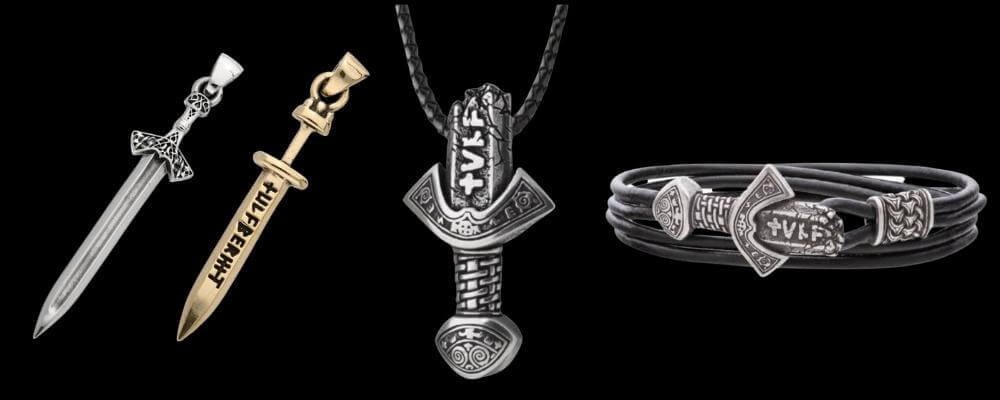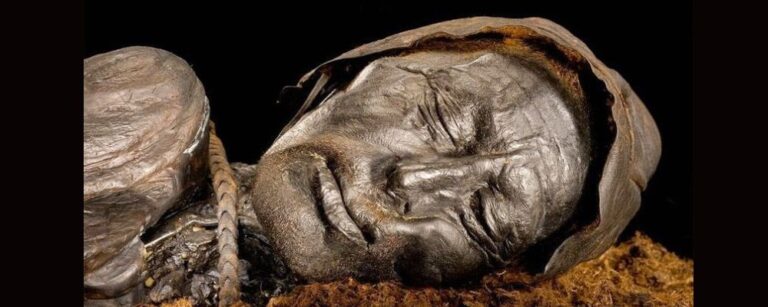When you read more sensational stories about Viking history, you will often hear tell of barbaric human sacrifices! While there is evidence of occasional human sacrifices among the Vikings in exceptional circumstances, the practice was rare.
It seems primarily to have been associated with kingship. Ahmad ibn Fadlan observed Volga Vikings, a group of Swedish descent living in the east, and describes a woman sacrificed to be buried alongside her dead chieftain. One of the two women found in the Oseberg ship burial also seems to have been of very high status, and perhaps a Volva (witch). The other women buried with her may have been a sacrifice.
The other evidence of human sacrifices among the Vikings is bog bodies, which are bodies that were interred in bogs, which means that in many cases they are well preserved. There is good evidence for other items, such as precious vessels and boats, being placed in bogs as offerings to the gods. It seems that the bodies may have served the same purpose.
But the truth is that bog bodies are a mysterious phenomenon, and they are not exclusive to the Viking age or realm. They are challenging to interpret, so let’s take a look at what we know.
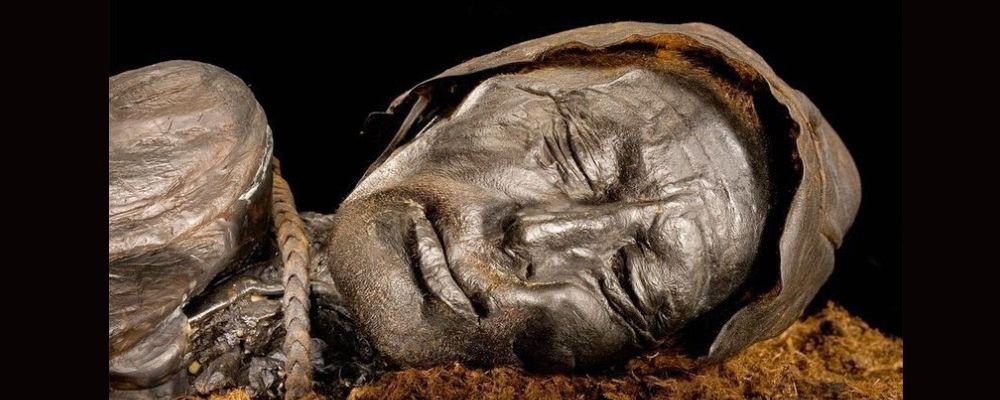
Distribution of Bog Bodies
The disposal of human bodies in bogs was a common tradition across Europe. Examples of these kinds of human remains have been discovered from Crete in the south to Norway in the north and Russia in the east. They are particularly common in Denmark, Norway, the Netherlands, and North Germany, and appear to a lesser extent in Britain and Ireland.
There are over 1,500 bog remains in museum collections today, representing both sexes and a wide range of ages, including babies. They also date, based on carbon dating, from Neolithic to recent times, but most date from around 200 BC to AD 500.
What this tells us is that bog burials were a tradition in a large expanse of northern Europe, particularly in areas where there are a lot of bogs such as Denmark and Norway. It was particularly common in the pre-Viking age when the Viking people were migrating into the Scandinavian land, and what we now think of as Viking culture was being established.
However, while the practice seems to have become less common as we enter the Viking age proper, it doesn’t die out and there are important examples of bog burials from the Viking period.

Viking Age Bog Burials
The literary sources suggest that Bog Burials were known in the Viking age. In the Heimskringla, written by Icelandic author Snorri Sturluson in the 13th century, King Harald Bluetooth of Denmark lured the Norwegian queen Gunnhild to Denmark on the pretext of a marriage alliance. But when she arrived, he instead ritually sacrificed her by drowning her in a bog.
Whether the story is true or not, Sturluson was familiar with the tradition and associated it with the Viking age. He would be unlikely to know about it if it was purely an Iron Age phenomenon. There was no writing in the Norse world in the Iron Age.
Several Viking age big burials have also been discovered. The best preserved is an 11th-century bog burial from Skjoldehamn, which is a coastal region of Arctic Norway. It sits near the border of the Viking and Sami lands. The body, which is probably female, was fully clothed in a colorful woolen costume in Viking style but was wearing Sami-style shoes. This is probably evidence of cultural exchange and that Sami shoes were better for arctic temperatures.
She was also wrapped in a woolen blanket, which was lashed to her using leather straps, decorated with tin rings and woven bands. Her body was laid on top of a reindeer pelt, which was in turn placed on top of a bed of birch sticks. The body was also covered in birch bark. These factors indicate that the burial was deliberate and that the person had some kind of important status.
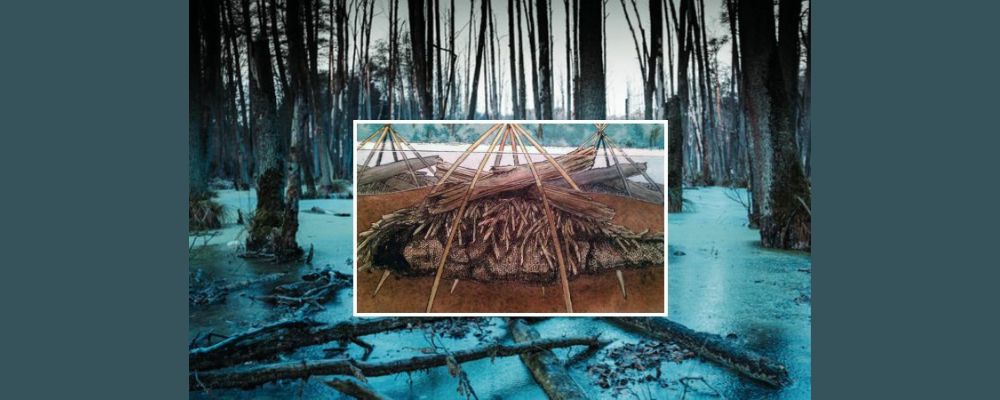
Bog Offerings
But bodies are not the only things that the Vikings placed in bogs. Archaeologists have also retrieved wooden and bronze vessels, weapons, and objects that seem to have been consecrated to the gods. Another common find is a waxy cheese-like substance made from dairy which seems to have been placed deliberately.
In addition to these items, in Norway, more than 40 ships have been found placed in bogs. The best preserved are from Kvalsund. They are a pair, a ship and a smaller boat, dating to the 7th or 8th century. They were clearly offerings because they were carefully placed. A bed of white moss turf, made from pure moss, heather, twigs, and woodchips, was placed under the boats. A similar substance covered the boats. There is also evidence of stones placed around the burial, probably as stepping stones for those doing the work. As well as tools such as oars, interred with the boats were an arrow, a bowl, and a speaking trumpet.
Considering the location of these 40+ boat bog burials along the Norwegian coast, it is difficult not to see these as offerings to the gods, no doubt to ensure good winds and safe journeys. It is noteworthy that the Norwegian Vikings were the explorers of the Viking world. They were the ones who discovered Iceland and Greenland.

Interpretation of Bog Burials
Despite the geographic and temporal distribution of bog burials, they are often interpreted as a single phenomenon.
Until recently, it was suggested that it was a form of execution and burial used for the worst criminals. This stems from a passage in Tacitus’ Germania, in which he shares observations of first-century AD Germanic tribes. He specifically suggests that bog burials were a form of judicial punishment, conducted publicly as a form of ritual sacrifice.
Many of the people buried in bogs seem to have been killed in a brutal fashion or mutilated after death, which lends some credence to this interpretation. The bodies were often strangled, hung, stabbed, sliced, and beaten.
Lindow man, a bog body found in Cheshire in Britain, was a young man who was well groomed. But when he died, he seems to have been kicked in the back to be brought to his need, then garroted, then had his throat slit, his neck broken, and the base of his head hit with a heavy object, before being thrown into the bog with some breath still in his lungs.
Two Irish bog bodies, known as Oldcroghan Man and Clinycavan Man, both seem to have had their bodies mutilated after death, including having their nipples cut off.
But are these extremes evidence of punishment or ritual?
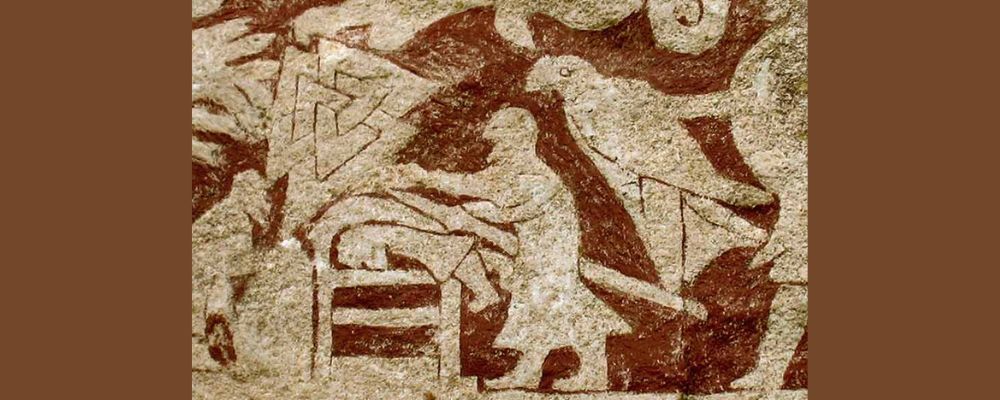
Big Burials as Sacrifices to the Gods
There is a pre-Viking age bog burial from Silkeborg, in the Jutland region of Denmark, known as Tollund Man. The body was found wearing a hat and belt, but no other clothing, and with a plaited leather thong wrapped tightly around his neck.
While the man does seem to have been hung, the leather around his neck was not the weapon and seems to have been placed there after he died.
This is interesting since the Gundestrup Cauldron, a pre-Viking artifact that was interred in a Danish bog near several bodies, shows a series of goddesses. All wear similar decorations around their necks and headdresses. This suggests that the man’s cap and the leather around his neck may have been part of a sacrificial costume.
Peter Vilhelm Glob, who was a professor of archaeology at Aarhus, wrote a book called The Bog People in 1965, in which he takes apart the idea of bog burials and criminal punishment and reframes them as ritual sacrifices.
He suggests that the sacrifices were made to Nerthus, the Earth Mother in Norse and Germanic religions. Bogs were chosen because they were special places that represented the intersection of land and water. They may also have been open spaces in heavily forested areas, representing a portal for communication between men below and the gods above. The gas caused by the rotting vegetation around bogs can also result in some fairly impressive fogs and lights.
The evidence suggests that most bog bodies were buried at the end of winter or in early spring. This is because the mouth and stomach contents of the bodies include things such as barley, linseed, and knotweed, rather than berries or apples. This is the period of the new harvest, and therefore a time to make sacrifices to fertility deities.
Interestingly, the Norwegian ship burials seem to have been buried at the end of spring or the start of summer, which was also the start of the sailing season!
Another Norwegian bog burial, from Bo in Rogaland, has produced four infant skulls. No other bones have been recovered from the burial, suggesting that the body parts were selected and deliberately placed. It also seems likely that they were all interred at the same time.
It is hard to reconcile this bog burial with the idea of criminal punishment. It is less difficult to imagine a sickness taking several children from the community at around the same time, and a ritual being conducted to help prevent something similar from happening in the future.

Final Thoughts
Bog burials are an enticing archaeological phenomenon. Some of the bodies that are retrieved almost look alive, like the person is just sleeping. It is like looking into the face of someone from history, and you want to know about their lives. But sadly, the surviving evidence actually tells us very little.
What we can say is that bogs were considered sacred places for centuries before the Viking age and during it. This makes sense since the Vikings often chose spaces in nature as their sacred spaces.
Many things were placed into bogs, from small artifacts to big ships to human bodies. There seem to have been a lot of rituals involved in their placement, suggesting deliberate acts that had some kind of cultural importance.
The humans placed in bogs vary greatly. There are men and women, and infants. Some seem to have been killed specifically for the purpose of being placed in the bog, while others seem already to have died. The items that were placed with them varied greatly, but none of the bodies were burned, which was uncommon. This suggests that they knew that whatever they placed there would be preserved.
It is difficult to understand why a community would want to ritually preserve the body of a criminal. This pushes us toward the idea that something about these bodies was sacred, therefore suggesting that they were offerings to the gods.
Perhaps criminals that were thought to have muddied their “souls” could agree to be sacrificed to redeem themselves for the afterlife.
Viking warriors that were wealthy enough to own swords were often buried with them, but the sword was bent to discourage grave robbing. Check out some of the sword pieces in the VKNG collection.
